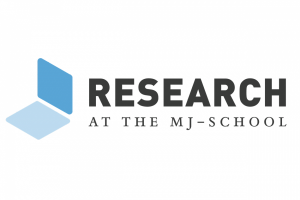Research Publication Roundup: Summer 2017

A vibrant and collaborative interdisciplinary research culture at the UNC Hussman School of Journalism and Media creates new knowledge, advances scholarship and helps reinvent media. Below is a list of recently published or presented scholarship by Hussman School faculty and students.
AWARDS
Powell, W., Dillman Carpentier, F. R. & Oliver, T. FIRE grant for Brown, Male, & Blue: Unmasking Depression and Suicide Risk among Boys and Young Men of Color.
The Office of the Vice Chancellor for Research, along with the Institute for the Arts and Humanities have recently awarded Dr. Wizdom Powell (lead researcher, UNC Gillings School of Global Public Health), Francesca Dillman Carpentier and Terence Oliver (UNC Hussman School) a FIRE grant. The proposal entitled Brown, Male, & Blue: Unmasking Depression and Suicide Risk among Boys and Young Men of Color, is one of only three proposals funded this year. The grant, in the amount of $25,000, is to develop a series of online videos that feature the voices of young men from the inner city. The videos will break the silence about mental health among men of color, challenge existing stereotypes, and give hope through stories of overcoming struggles and achieving success.
RECENT PUBLICATIONS
Dillman Carpentier, F. R., Stevens, E. M., Wu, L., & Seely, N. (online first 2017). Sex, love, and risk-n-responsibility: A content analysis of entertainment television. Mass Communication and Society. DOI: 10.1080/15205436.2017.1298807.
This article updates and extends a decade-old landmark study of sexual content on television. It catalogues how common different types of casual and romantic sexual content are in today's network and cable television shows. It also notes the rare instances of sexual health mentioned in these popular shows. This work was funded with a grant from the Mass Communication and Society Division of the Association for Education in Journalism and Mass Communication.
Ekstrand, V., & Roush, C. (2017). From ‘hot news’ to ‘hot data’” The rise of ‘Fintech,’ the ownership of big data, and the future of the hot news doctrine. Cardozo Arts & Entertainment Law Journal, 35(2), 303-339.
The article focuses on the way disputes about financial data control have manifested in misappropriation hot news claims in the United States. The authors discuss the history of financial markets in the United States.; conflict between federal and state law on same and on the case McGraw-Hill Companies, Inc. v. International Securities Exchange, Inc.
Southwell, B.G. Thorson, E. A. & Sheble, L. (Eds.). (2018). Misinformation and Mass Audiences. Austin, TX: University of Texas Press.
This book the first comprehensive social science volume exploring the prevalence and consequences of, and remedies for, misinformation as a mass communication phenomenon.The contributors discuss audience deception, the ethics of satire, the diffusion of rumors, the role of Internet search behavior, and the evolving efforts to counteract misinformation, such as fact-checking programs.
Noar, S. M., Francis, D. B., Bridges, C., Sontag, J. M., Brewer, N. T., & Ribisl, K. M. (2017). Effects of strengthening cigarette pack warnings on attention and message processing: A systematic review. Journalism and Mass Communication Quarterly, 94(2), 416-442.
This systematic review of longitudinal observational studies examined the impact of strengthening cigarette pack warnings on attention, message processing, and perceived effectiveness. The review included 22 studies (N = 81,824 participants). Strengthened warnings increased attention to warnings, recall of warnings, and thinking about the health risks of smoking. Strengthened warnings also increased several perceived effectiveness outcomes.
Dillman Carpentier, F. R., & Stevens, E. M. (2017). Sex in the media, sex on the mind: Linking television use, sexual permissiveness, and sexual concept accessibility in memory. Sexuality & Culture, 1-17.
This study explored the interrelationships between emerging adults’ exposure to sexual depictions on television, attitudes toward sexually permissive behaviors, and the salience (accessibility) of concepts related to sexual activity in implicit memory. Young adults who held stronger sexually permissive attitudes found it easier to access concepts of sexual activity in memory. However, there was no direct connection between exposure to sex on television and accessibility of sexual activity in memory when accounting for permissive attitudes. This suggests that sexual permissiveness is at the center of any link between exposure and accessibility.
Fuller, P.B. (2017) Mosaic Theory and Cyberharassment: Using Privacy Principles to Clarify the Law of Digital Harms and Free Speech. Communication Law and Policy, 22(3), 309-350. DOI: 10.1080/10811680.2017.1331637.
This article uses mosaic theory to explore the ways information mosaics can be used to harass targeted individuals. The article concludes that states should pursue incremental modifications to their cyberharassment laws to address the harms caused by persistent, intentional, targeted uses of information mosaics against targets. It also recommends that states better articulate which information-sharing activities are exempt from prosecution.